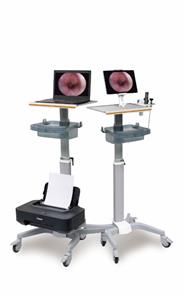Sphenoidotomy
Background
Sphenoidotomy is the surgical opening of the sphenoid sinus.
The sphenoid sinuses are central aerations of the sphenoid bone that start developing at about 3 months’ gestation. Their development initiates as a vagination of the cartilaginous cupular process and continues to enlarge until the teenaged years.
Because of the high variability of sphenoid sinus pneumatization, the boundaries can differ from person to person.
The anterior boundaries of the sphenoid sinus are likely the most consistent. They include the sphenoid crest anterosuperiorly, which articulates with the perpendicular plate of the ethmoid bone, and the rostrum anteroinferiorly, which articulates with the vomer. The posterior boundaries of the sphenoid sinus usually include the sella turcica medially and cavernous sinuses laterally.
Hamberger described 3 types of pneumatization based on its relationship to the sella turcica: conchal (rudimentary or absent sphenoid sinus), presellar (a posterior sphenoid sinus wall that is separated from sella by thick bone), and sellar (a posterior sphenoid sinus wall that is adjacent to sella). [1] The most common configuration in his series was the sellar type, found in 86% of the population, compared to the presellar type (11%) and conchal type (3%).
Authors have described a quite common fourth configuration, postsellar type, in which sphenoid sinus extends beyond the sella turcica so that the sella forms a portion of the roof of the sphenoid sinus. In addition, the optic chiasm and internal carotid arteries are often intimately associated with posterior or lateral walls of sphenoid sinus.
The lateral limits of the sphenoid sinus vary greatly. The inferolateral area of the sphenoid sinus carries the vidian nerve, and the superolateral area carries V2 in foramen rotundum.
The lateral extent of the sphenoid sinus may extend to or beyond these nerves. The posterior septal branch of the sphenopalatine artery runs a few millimeters below the natural os of the sphenoid sinus.




